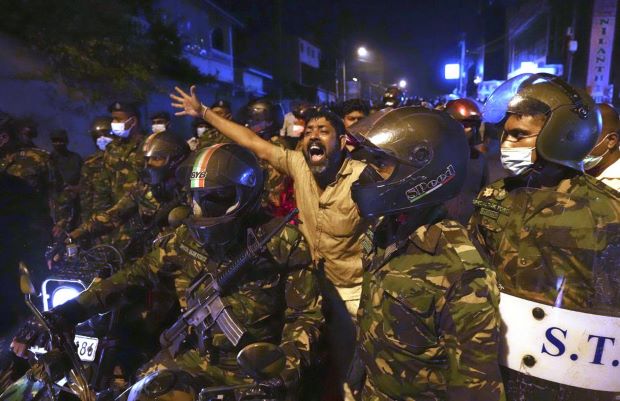Sri Lanka joins the debt defaulters club

PARIS – Crisis-hit Sri Lanka said Tuesday it was defaulting on all payments on its $51-billion external debt after running out of foreign exchange to import desperately needed goods.
The Indian Ocean island, which is battling its worst economic downturn since independence in 1948, joins a small club of countries that have failed to repay their debts.
– Lebanon, Argentina, Belize, Zambia, Suriname, 2020 –
Lebanon, once known as the “Switzerland of the Middle East”, defaults on a debt payment for the first time in its history in March 2020 with the country sunk in a deep economic crisis amid huge protests about corruption.
In May 2020, Argentina defaults for the ninth time in its history, unable to make a $500-million payment.
Its previous default in 2001 was at $100 billion the largest in history at the time.
It took until 2016 for it to return to international credit markets.
The pandemic also sends Belize, Zambia and Suriname into default in 2020.
– Venezuela, 2017 and 2018 –
In November 2017, Venezuela – which has the world’s largest oil reserves – is declared to be in partial default by rating agencies Fitch and S&P Global Ratings.
Badly hit by falls in the price of oil and American sanctions, the economy is in free fall, with shortages of food and medicine.
Despite Moscow agreeing to give its ally a $3.15 billion restructuring package on its $150-billion debt, Caracas defaults on a payment on its sovereign debt on January 2, 2018.
– Greece, 2015 –
Greece becomes the first developed country to default on its debt to the International Monetary Fund (IMF) when, at midnight on June 30, 2015, it misses a 1.5-billion-euro ($1.7-billion) repayment.
Two weeks later it missed a second payment to the IMF of 456 million euros.
An emergency short-term loan from a European Union crisis fund, however, enables it to pay off these debts.
An 86-billion-euro bailout ($96-billion) over three years is approved in August 2015, after Greek lawmakers agree to tough austerity measures and reforms.
– Ecuador, 2008 and 2020 –
In December 2008, Ecuador’s President Rafael Correa suspends the payment of nearly 40 percent of the Latin American country’s debt for the third time in 14 years.
Ecuador is also tipped into default by the pandemic in 2020, but it restructures its debt in a move praised by the IMF.
– Russia, 1918 and 1998 –
Russia defaults on foreign currency-held debt in 1918, when Bolshevik revolution leader Vladimir Lenin refuses to recognise the debts of the deposed tsar.
In August 1998, Russia declares a 90-day moratorium on the payment of its foreign debt and a de facto devaluation of the ruble, and defaults on its domestic debt.
Its foreign debt stands at $141 billion, while Fitch estimates its internal debt at the equivalent of $50.6 billion.
The country had been hit by the ripple effect of an Asian economic crisis and the ruble was attacked by speculators as oil prices plunged, weakening the value of a key Russian export.
It was more than a decade before Russia was able to borrow money again on international markets.
Under heavy sanctions over its invasion of Ukraine, Russia risks another foreign debt default this year. In April, S&P declares Moscow in “selective default” after it pays a dollar-denominated debt in rubles.
– Mexico, 1982 –
In August 1982, Mexico says it can no longer service its debt of $86 billion, with $21 billion also owed in interest.
After the default, the United States provides emergency loans and the IMF grants aid in exchange for structural economic reforms.
Commercial banks later write off large chunks of the debt.
The IMF comes to Mexico’s rescue again in 1995 with $17.8 billion in loans as part of a $50-billion international aid package.
– Agence France-Presse

